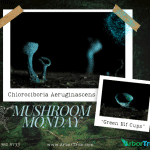
Mushroom Monday: Green Elf Cup (Chlorociboria aeruginascens)
September 9, 2024
Dicotyledons and Monocotyledons – What’s the Difference?
September 13, 2024
Who Knew it Was Broken? – How Legumes Fix Nitrogen
In a recent blog post, we wrote about what’s in the air. We noted that the majority of the air (around 78%) is nitrogen. You may have heard before that legumes can fix nitrogen – that they can take it and turn it into a form that plants can use – but maybe you didn’t know how it works. In today’s post, we look at the idea and let you know how legumes fix nitrogen.
What are Some Examples of Legumes?
Legumes include a lot of plants you may be familiar with such as peanuts, beans, clovers, and vetches. Legumes are from the family of beans and there are thousands of species.
Why do Legumes Have to “Fix” Nitrogen?
Although nitrogen is abundant in our atmosphere, it isn’t usable by the majority of organisms on Earth while it’s in the N2 form. The bond between the nitrogen atoms is too strong for most organisms to break down and so the nitrogen can’t be used.
Why is Nitrogen Important?
Every organism needs nitrogen, and it’s an important element that plants need to grow. It’s in chlorophyll, amino acids, proteins, and other biomolecules. Without adequate nitrogen, plant growth is limited. Human beings also need nitrogen, and we get it from the food we eat.
What is Fixing Nitrogen?
As mentioned, nitrogen gas in the form N2 can’t be used by most organisms. It needs to be reduced into a different form. It is converted from N2 to NH3. The process of this is fixing nitrogen.
What Fixes Nitrogen?
Only a few types of organisms can fix nitrogen. They include rhizobia bacteria, lichens, and blue-green algae. They can get nitrogen from the air and soil. Bacteria use an enzyme to process the nitrogen. Bacteria that fix nitrogen can be found in the soil and can also be added to legume seeds for planting.
What do Legumes Have to Do With This?
Bacteria in the soil need a habitat and energy to be able to fix nitrogen. Legumes provide this through nodules on their roots. The bacteria live in the nodules and get carbon, energy, and nutrients from the legumes. Different types of legumes will produce different amounts of nodules. The legumes get nitrogen from the bacteria, which the legumes use for different processes and growth. It is a symbiotic relationship. Even though we may speak about legumes fixing nitrogen, they don’t actually do it. The bacteria do. The legumes are a partner in it though.
Legumes have to be healthy for the bacteria to be able to fix nitrogen adequately, because the bacteria are supported by the legumes. If the legumes aren’t able to provide enough sugars, energy, and nutrients for the bacteria because of stress on the legumes, then the process of nitrogen production can be slowed or stopped. Stress can come in the form of environmental stress, lack of nutrients, and other factors.
How do Other Plants Benefit From Legumes and Nitrogen Fixation?
When bacteria living in nodules on the roots of legumes fix nitrogen, some of it is released into the soil, but most of it is taken up by the legumes. When the legumes die and decompose in the soil, the nitrogen is available for other plants. This can happen naturally, or legumes can be grown as a cover crop and then tilled into the soil. If the beans of the legumes are picked, this lessens the amount of nitrogen that can be returned to the soil. Also, if the legumes plants are not returned to the soil, very little nitrogen will be left for other plants, as the bacteria only release a relatively small amount into the soil.
How Much Nitrogen is Fixed by Legumes?
In a natural environment, the amount of nitrogen that legumes can fix can range from around twenty five to around seventy five pounds for each acre they are covering. This amount is greater for crop systems where legumes are planted as a cover crop. A number of factors can influence how much nitrogen legumes can fix.
Can Any Legume Fix Nitrogen With Any Nitrogen Fixing Bacteria?
Legumes and different nitrogen fixing bacteria have formed specialized relationships over time, in a similar way that different fungi form specialized relationships with certain species of trees. Some bacteria can fix nitrogen with a variety of legumes, but generally they can fix more nitrogen with specific ones, and in some cases the relationship can be very specific.
If a type of legume has been planted in an area and then another type of legume is planted, the bacteria that is abundant because of the first legume may not be able to adequately fix nitrogen with the legume that follows.
Do Legumes Fix Nitrogen at Different Rates?
Legumes do vary in terms of how much nitrogen they can fix. Some legumes can fix nitrogen very efficiently and others can’t. Some legumes have to provide more nutrients and energy for a given amount of nitrogen produced than others do.
If you liked learning about legumes and nitrogen fixation, check out the other posts on our TrueTreeTalk blog. Follow us on Facebook to keep up with these and other posts.
* * *
ArborTrue is a science-based tree-service company in the greater Houston area. We also serve Austin and other parts of Central Texas. We provide a range of services including tree trimming, tree pruning, tree removal, tree planting, arborist consultations, and more. Call us today at 832-980-8733 (Houston) or at 512-546-3833 (Austin) or reach out to us online to schedule an appointment.




